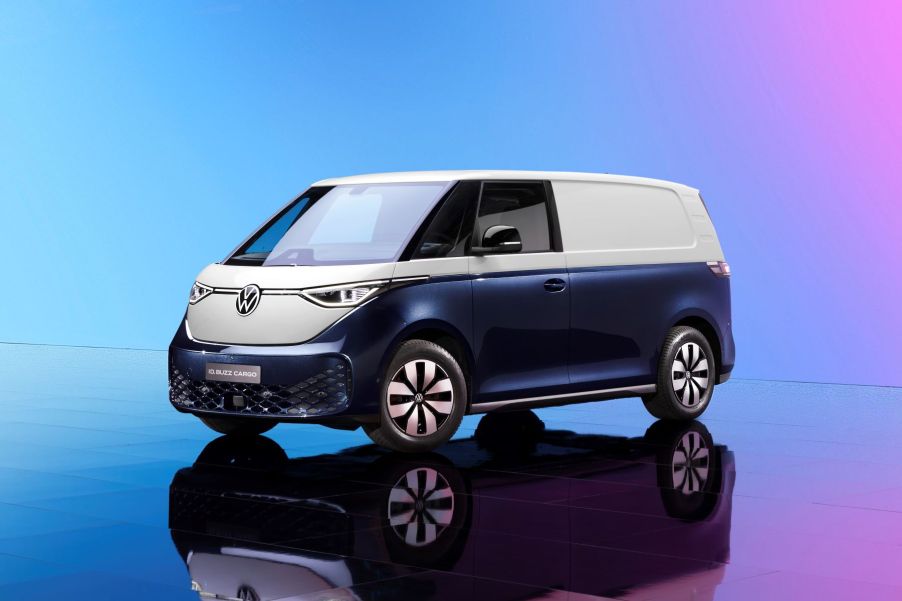
Volkswagen ID. Buzz vs. Ford E-Transit: Electric Cargo Van Showdown
Volkswagen has finally unveiled its all-electric revival of the VW Bus and the Volkswagen ID. Buzz seems like it’s going to be a pretty popular van. While many people will be buying the ID. Buzz for regular driving, VW will also be selling the van as a cargo van. This means that the VW ID. Buzz will be competing against the very capable Ford E-Transit cargo van. So, here’s a look at how the two compare.
A look at the Volkswagen ID. Buzz Cargo

According to VW, the ID. Buzz Cargo will have very similar specs to the regular ID. Buzz. The ID. Buzz Cargo will come standard with a single electric motor that generates about 201 horsepower and 229 lb-ft of torque. It has an 82-kWh battery, but only 77-kWh of that battery is useable. It’s not entirely clear what the ID. Buzz Cargo’s range will be, but it’s currently estimated that the ID. Buzz Cargo could have a range of about 260 miles.
The Volkswagen ID. Buzz Cargo has about 11 kW of charging power when using AC, but it can also be charged with DC. With a DC fast charger, its charging power jumps up to 170 kW. That allows the ID. Buzz Cargo to recharge from 5% to 80% in about 30 minutes, according to VW.
This VW electric cargo van will have three seats as standard instead of the seven seats that the regular ID. Buzz gets. This helps the ID. Buzz Cargo get a cargo capacity of about 137.7 cu. ft. The ID. Buzz Cargo also gets a wide-opening tailgate and a sliding passenger door to make loading and unloading easier.
The Ford E-Transit is a very capable all-electric cargo van too
Another electric cargo van on the market is the Ford E-Transit, and it has some impressive specs. Under the hood, Ford gave the E-Transit a similar powertrain to the Mach-E. This Ford van will start with a single electric motor that gets 266 horsepower and 317 lb-ft of torque.
That said, the E-Transit’s range and battery pack aren’t great at all. It has a 68 kWh battery, and it only gets 125 miles on a single charge. The reason for that low range is that Ford doesn’t expect many cargo van drivers to drive more than that in a single day. The good news is that it can use DC fast charging. With DC fast charging, it’ll charge from 15% to 80% in about 30 minutes.
To save weight and maximize cargo space, the E-Transit comes with two seats. Ford’s efforts paid off, as the E-Transit has a max cargo capacity of 487.3 cu. ft., and it can also carry a payload that weighs up to 3,800 pounds.
How these two cargo vans compare
Since they’re both cargo vans, cargo capacity is a big part of their jobs, and the E-Transit has almost four times the cargo capacity. However, since Ford didn’t give the E-Transit a lot of range, the ID. Buzz Cargo may be better for longer drives. Meanwhile, in terms of their charging capabilities, both vans are about the same.
However, what pushes the Ford cargo van over the edge are some simple facts. First, folks can buy the E-Transit right now in the U.S. It costs about $45,000, while Volkswagen hasn’t even released pricing details of the ID. Buzz just yet. Next, the ID. Buzz won’t even come until the 2024 model year. More importantly, Volkswagen currently doesn’t plan on selling the ID. Buzz Cargo in the U.S., so only Europeans will get it for now.


